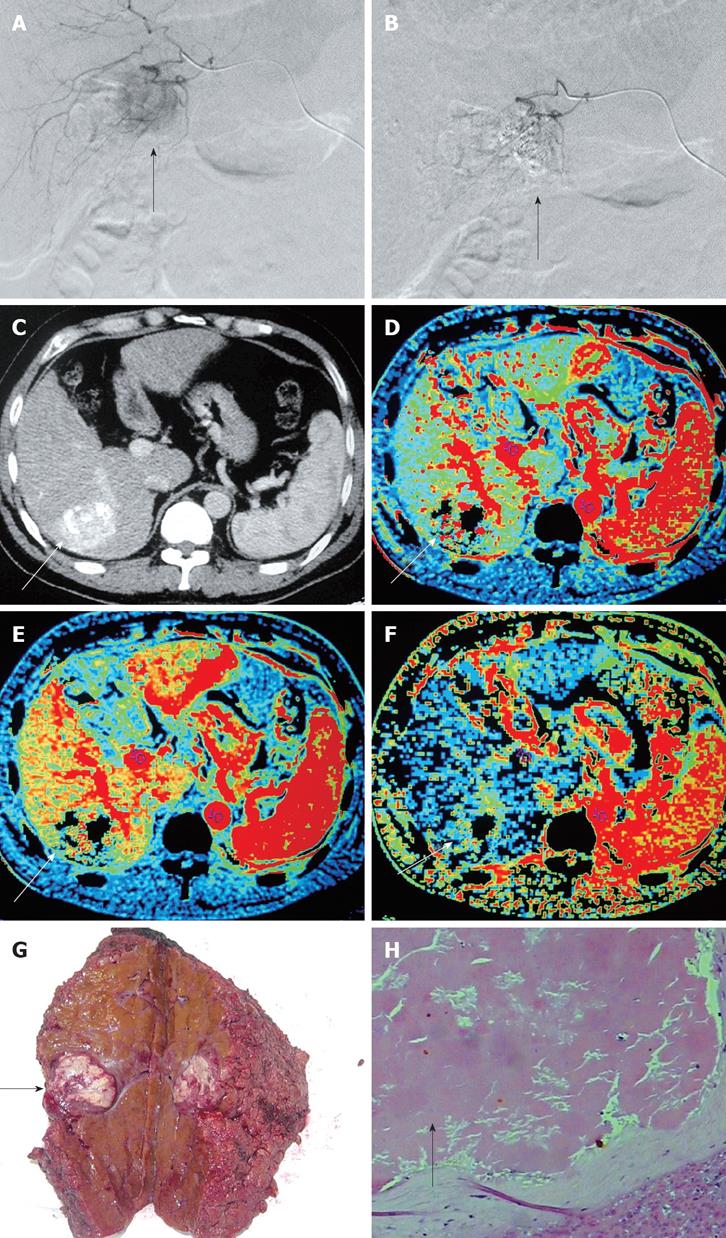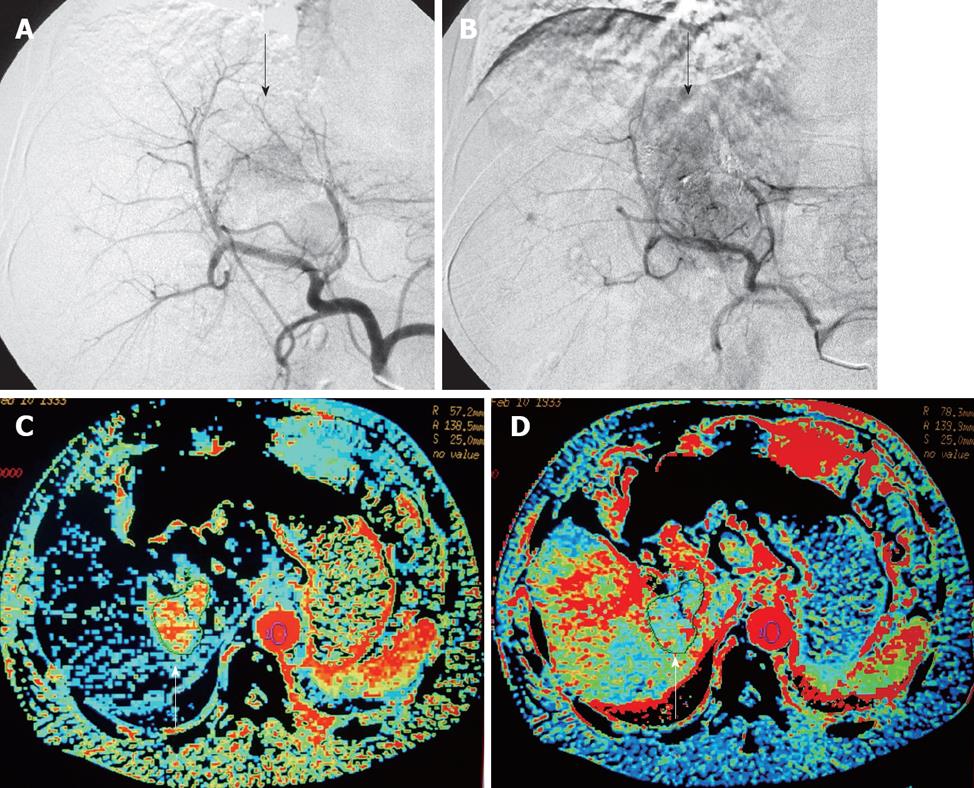Copyright
©2008 The WJG Press and Baishideng.
World J Gastroenterol. Oct 7, 2008; 14(37): 5738-5743
Published online Oct 7, 2008. doi: 10.3748/wjg.14.5738
Published online Oct 7, 2008. doi: 10.3748/wjg.14.5738
Figure 1 Images obtained in a patient with HCC verified with treatment response of PR.
A: Pre-TACE angiography showing a tumor with a diameter of 3.5 cm in the right lobe of liver (arrow); B: Post-TACE angiography showing a viable region of tumor that was reduced by more than 50% (arrow) compared with pre-TACE; C: CT image 4 wk after TACE showing an incomplete lipiodol accumulation in the viable tumor region (arrow); D: HBF map of post-TACE CT perfusion showing a significant decrease of HBF in the viable tumor (arrow) compared with pre-TACE; E: Post-TACE HBV map showing a significant decrease of HBV in the viable tumor (arrow) compared with pre-TACE; F: Post-TACE HAF map showing a significant decrease of HAF in the viable tumor (arrow); G: Small necrotic lesions observed (arrow) after two periods of TACE treatment (arrow); H: Pathological slides (HE staining, × 40) showing lipiodol embolism in the small vascular cavity (arrow).
Figure 2 Images obtained from a patient with HCC with treatment respo-nse of PD group.
A: Pre-TACE angiography showing a tumor in the left lobe of liver (arrow); B: Post-TACE angiography showing an increased viable tumor region by more than 25% (arrow) compared with pre-TACE; C: HAF map of post-TACE CT perfusion showing significantly increased HAF in the viable tumor (arrow) compared with pre-TACE; D: Post-TACE HBF map showing increased HBF in the viable tumor (arrow) compared with pre-TACE.
- Citation: Chen G, Ma DQ, He W, Zhang BF, Zhao LQ. Computed tomography perfusion in evaluating the therapeutic effect of transarterial chemoembolization for hepatocellular carcinoma. World J Gastroenterol 2008; 14(37): 5738-5743
- URL: https://www.wjgnet.com/1007-9327/full/v14/i37/5738.htm
- DOI: https://dx.doi.org/10.3748/wjg.14.5738














